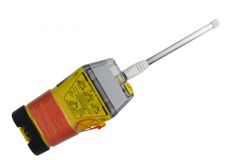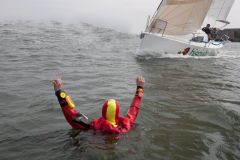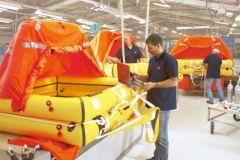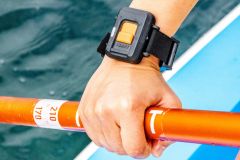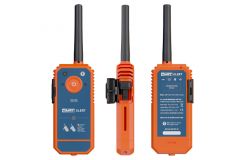We're all familiar with personal distress beacons, which can be fitted as an accessory to a lifejacket. There are 2 types of beacon:
- PLB tags
Personal Located Beacons (PLBs) are SARSAT-COSPAS beacons that emit a signal picked up by satellites. This distress signal is then relayed to the rescue services in the various countries. In France, it's the CROSS that manages the rescue, using the GNSS position (GPS, Galileo, Glonass) transmitted by the beacon to return to the shipwrecked person. These beacons operate all over the world, both at sea and on land.
- MOB AIS beacons
In parallel, there are MOB AIS (Man Over Board Automatic Identification System) distress beacons. Still about the size of a pack of cigarettes, like PLBs, these beacons emit a digital VHF signal that is received by all AIS receivers within range. These beacons are highly effective, because if a shipwrecked person falls overboard, the nearest boats can intervene as quickly as possible. Particularly when sailing with a crew, the boat from which you have just fallen is logically the nearest.
A model that combines both technologies
Beacon manufacturer Ocean Signal launches the RescueME PLB3, a model that integrates both technologies: PLB and MOB AIS. Given its size, it's a model that will also fit in a lifejacket, but which combines both a global and local distress message in a single beacon.
Longer
Admittedly, this beacon is twice as long as a simple model, but it can combine 2 search modes to ensure a considerable increase in chances and speed of rescue. Measuring 20 x 3.6 cm, it weighs just 190 g.

Connectable to a cell phone
NFC (Near Field Communication) technology is now integrated into the beacon, enabling simplified and efficient interaction between the beacon and a cell phone. This innovation facilitates access to essential data. By simply bringing their phone close to a beacon, users automatically activate the Ocean Signal Product App. This fast, intuitive interaction opens the door to a wide range of usage data. Crucial information includes the beacon's current battery life, the number of self-tests performed, and the number of GNSS tests carried out. What's more, if the beacon has been activated, the duration of this activation is also available.
Users have access to detailed information on each self-test and GNSS test carried out by the beacon, with positioning on a map specifying the exact location of the test, the date and time it was carried out, the time taken for the beacon to obtain a position on GNSS coordinates, the number of satellites used for this acquisition, and the accuracy of the location obtained.
A reassuring EPIRB function
This beacon also features an RLS (Return Link Service) function. A blue light on the beacon indicates that the distress signal has been received by the emergency services. It lets the castaway know that his distress has been taken into account. A reassuring step when you're floating alone in the water.
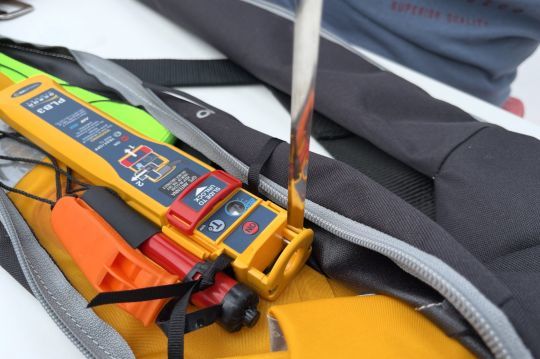
Immediate response to distress signals!
For our tests, we handled the beacon in a harbor in Northern Brittany. We accidentally triggered it after setting it up with our boat's MMSI. Very quickly, we received a call from CROSS on the VHF asking us to identify ourselves and justify ourselves. However, our signal was only transmitted for a few seconds, enough time for us to realize our error and deactivate the beacon. A reassuring response from the authorities, demonstrating the perfect operation of the device and the speed with which it was taken into account on our shores.
Safety comes at a price
This model is also more expensive than a simple beacon, costing ?639. That's about the same price as a PLB plus a MOB AIS. In fact, from the same brand, a simple PLB costs ?389, while the MOB AIS costs ?369. But what price do you put on safety?

 /
/ 

